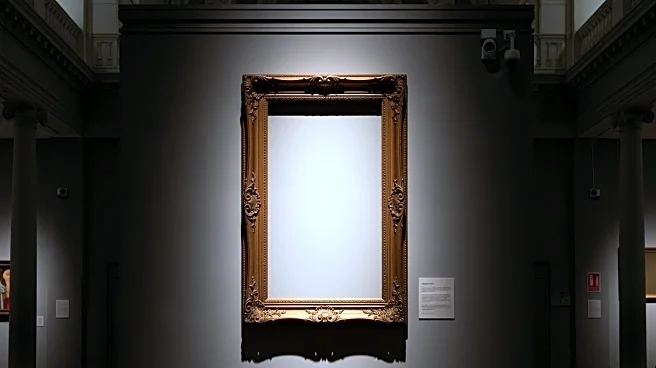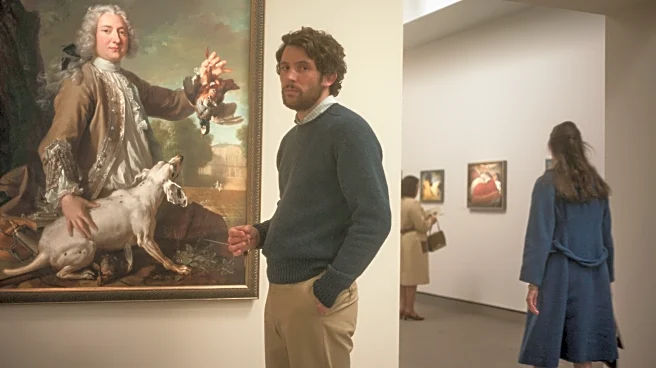What's Happening?
The new film 'The Mastermind,' starring Josh O'Connor, delves into the world of art heists, a crime genre that gained notoriety in the 1970s. The film is inspired by real events, including a notable 1972 heist at the Worcester Art Museum in Massachusetts,
where thieves stole paintings by renowned artists such as Paul Gauguin and Pablo Picasso. This heist, orchestrated by Florian 'Al' Monday, was one of the largest art thefts of its time, with the stolen artworks valued at $2 million. The film explores the cultural fascination with art heists, highlighting the anti-establishment sentiment of the era and the allure of outsmarting institutions.
Why It's Important?
The film 'The Mastermind' sheds light on the cultural and historical context of art heists, which were emblematic of the 1970s' anti-authority mentality. This period saw a rise in art thefts, reflecting broader societal shifts and a growing perception of art as a lucrative commodity. The film's exploration of these themes offers insights into the intersection of crime, culture, and economics, highlighting how art heists have been romanticized in popular culture. This narrative not only entertains but also prompts reflection on the value of art and the motivations behind such crimes.
What's Next?
As 'The Mastermind' is released, it may spark renewed interest in the history of art thefts and their portrayal in media. The film could lead to discussions about the security of art institutions and the ongoing challenges they face in protecting valuable collections. Additionally, it may inspire further cinematic explorations of art crime, potentially influencing how future heist films are crafted, with a focus on authenticity and historical accuracy.
Beyond the Headlines
The film's release coincides with a broader cultural examination of how art is valued and protected. It raises questions about the ethics of art ownership and the responsibilities of institutions in safeguarding cultural heritage. The narrative also touches on the psychological aspects of crime, exploring the motivations of individuals who engage in art theft and the societal factors that contribute to such actions.















